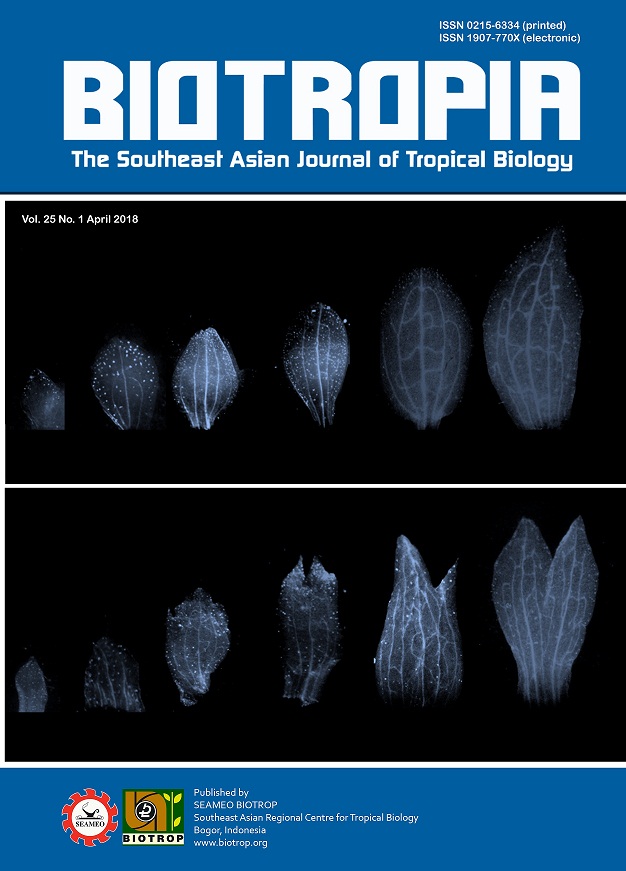
Tags
JABON (Anthocephalus cadamba Roxb) POTENCY FOR REMEDIATING LEAD (Pb) TOXICITY UNDER NUTRIENT CULTURE CONDITION
Content Language : English

Information on metal adaptation of plants is necessary to understand the mechanism of heavy metal, including lead (Pb), remediation mediated by forest plants in contaminated land. This study aimed to find out the adaptation mechanism of jabon (Anthocephalus cadamba Roxb) seedlings to excessive lead level based on the tolerance index of growth performance and lead transport to plant tissue. The seedlings were exposed to lead (Pb(NO3)2) with the concentrations of 0, 0.5, 1, 1.5, 5 and 10 mM in nutrient culture for 15 days. The result showed that the tolerance index (TI) of the seedlings was significantly decreased by Pb exposure up to 1.5 mM, but the TI values were more than 75%. All seedlings died at Pb concentration of 5 mM and up. Pb accumulated in all parts of the seedlings, with the highest concentration found in the leaves (735.9 ppm) under Pb concentration of 0.5 mM. The Pb was found to be transported to the top portion of the seedlings indicated by Transport Factor (TF) that was more than 1. The results suggest that jabon can adapt to excessive Pb exposure up to 1.5 mM and has the potential as a remediator plant.
Link

This work is licensed under a Creative Commons Attribution-NonCommercial-NoDerivatives 4.0 International License.
